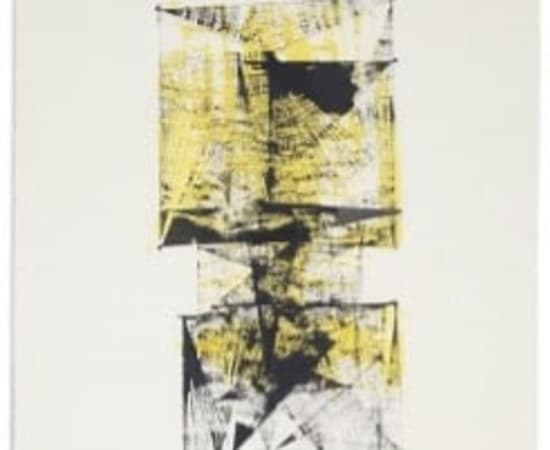Lynn Chadwick British, 1914-2003
Lynn Chadwick (1914–2003)
British Sculptor and Painter
Lynn Chadwick was one of the most important British artists of the 20th century, internationally recognised for his innovative sculptures and striking paintings that explored form, movement, and the human condition. Though best known as a sculptor, Chadwick was also a prolific and accomplished painter and draughtsman whose two-dimensional works played a vital role in his creative process and artistic legacy.
Originally trained as an architectural draughtsman, Chadwick brought a structural precision to his art. He began creating sculpture in the late 1940s, rising to prominence as part of the post-war generation of British artists who redefined modern sculpture. His breakthrough came with his participation in the 1952 Venice Biennale, where his work captured attention alongside contemporaries like Henry Moore and Eduardo Paolozzi. In 1956, he won the International Sculpture Prize at the Venice Biennale, notably ahead of Alberto Giacometti, solidifying his reputation on the global stage.
Chadwick’s sculptures are instantly recognisable for their angular, often anthropomorphic forms — typically constructed in welded iron or cast bronze — evoking both architecture and the figure. His iconic male and female forms, often shown in pairs, radiate a sense of silent tension, interaction, and balance. Many of his later bronzes display faceted, geometric surfaces combined with expressive, textured patinas.
Alongside his sculpture, Chadwick produced an extensive body of paintings, gouaches, and drawings throughout his career. His paintings, while less widely exhibited during his lifetime, reflect the same structural sensibility, with bold, abstracted figures, architectural motifs, and an atmospheric use of colour. These works were not merely preparatory; they form a significant and standalone aspect of his oeuvre, demonstrating a deep engagement with line, composition, and surface. In many cases, his two-dimensional works explore ideas later realised in three dimensions, offering insight into his creative mind.
Chadwick lived and worked at Lypiatt Park in Gloucestershire from the 1950s until his death in 2003. His work has been exhibited widely in major institutions around the world, including Tate, the Museum of Modern Art (New York), Centre Pompidou (Paris), and the Hirshhorn Museum (Washington D.C.). He was awarded a CBE in 1964 and remains one of the key figures in modern British art.
Today, both his sculptures and paintings are highly sought after, valued for their bold formal language, psychological depth, and enduring modernity.

